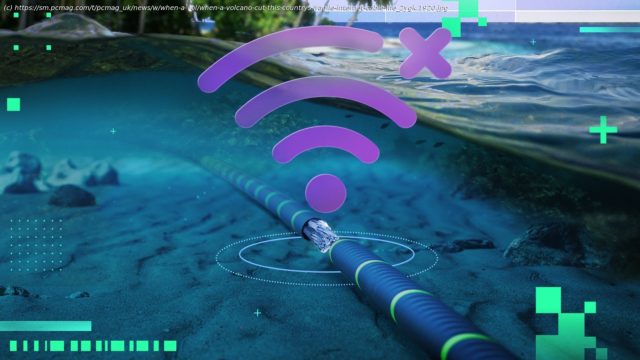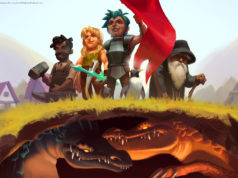A single underwater cable the size of a garden hose connected Tonga to the outside world—until a natural disaster struck. And it could happen to anyone.
It all started with an underwater volcanic eruption. Debris shot into the air, gathering force as it cascaded down the volcano’s flanks, plunged back into the ocean, and sliced Tonga’s only international internet cable in two places, like cutting out the middle of a submarine sandwich.
Tonga, a tiny island nation east of Australia, immediately lost power and internet service. The eruption happened during the pandemic, in 2022, so flights were already suspended. Now, Tonga was officially alone, with no physical or digital connection to the outside world and no way to call for help. Underwater, the middle portion of the cable drifted out to sea, and the two severed ends flailed in the abyss.
„I initially thought Tonga would be thrown back, to say, the 1980s, before it had broadband internet“, says Samanth Subramanian, who tells the full story in his new book, The Web Beneath the Waves, out this week. „But it was more like they went back to the 1880s, around the time they first laid a telegraph line to Tonga, and they would only receive occasional visitors by ship.“
Thrown back in time, residents resorted to paper record-keeping for banking (no credit cards), traveled door-to-door to speak to each other, and grew their own food. Subramanian traveled to the island to write the book, providing a rare firsthand account, and the book covers similar incidents, such as China’s politically motivated attacks on Taiwan’s cables. Seafloor Garden Hoses, With Way Too Much Power
About the size of a garden hose, subsea cables snake along the seafloor, transporting 95% to 99% of internet traffic, depending on the estimate. They support nearly every aspect of our internet-connected world, making them increasingly critical. Meta, in February, announced plans to build the world’s longest cable, focusing on piping its AI technologies around the world.
Inside each one is a thicket of wires, some about as thin as a strand of hair, in the case of fiber optic cables, says London-based Subramanian. The ends connect to landing stations on the shore, where large servers dole out the traffic to internet providers for nearly every internet activity—content streaming, video calls, stock exchange trades, social media, email, credit cards, medical records, and much more. Even many phone calls run through cables, not old-school phone lines.
The duality of how essential, yet vulnerable, they are is what drew Subramanian to immerse himself in the subject and write the book.
„Over the past 10 years, the internet has grown so central to our lives“, Subramanian says. „If a cable were cut in 2002, it would be a lot easier to recover from it. But now, there are a lot of things in our lives that depend on it, and for the internet to be taken away would be a big disaster.“
What happened in Tonga is just a tiny microcosm of what a cable apocalypse would entail. Here’s a taste of Subramanian’s account.The First 4 Days After the Eruption: Panic
The first few days after the eruption were the most challenging for Tonga’s roughly 100,000 residents. Without the ability to call or text anyone, they struggled to confirm the death toll.
„The first 48 hours were chaos“, Subramanian says, as residents walked door to door in the hot, humid weather to check on each other. „The biggest anxiety was not whether the internet would work, it was whether everyone was alive. One government official had to choke back tears when telling me about this time.“
The government organized search parties to check on residents, and foreign embassies did the same for their citizens. Some small planes flew to Tonga’s northern island, Vava’u, to confirm the people there „weren’t fully submerged.
Start
United States
USA — software When a Volcano Cut This Country's Fragile Internet Cable, Life Snapped Back...






